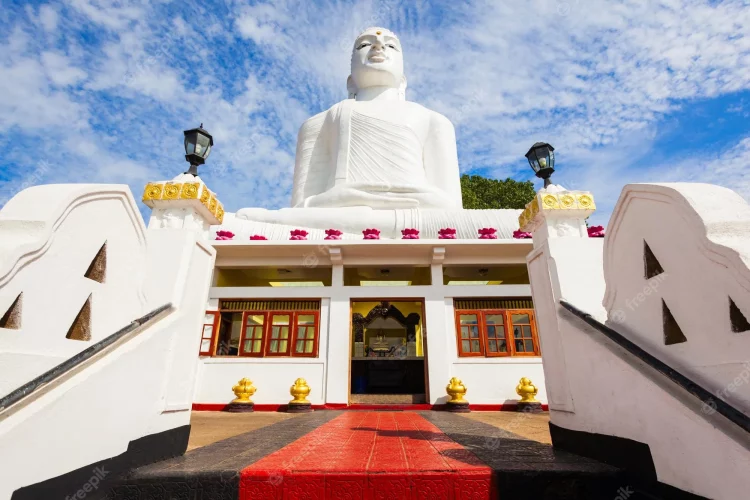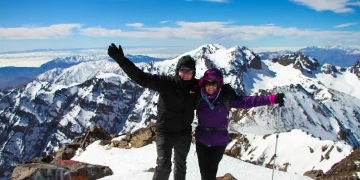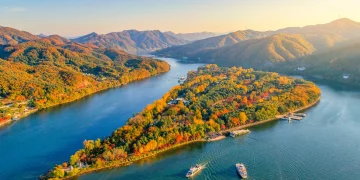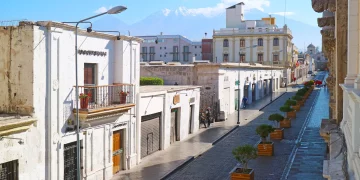The Rise of Ritual Over Recreation
A quiet yet undeniable shift is underway in the travel patterns of Western adventurers. Beyond beach cocktails and city tours, a new form of immersive tourism is capturing attention: ritual tourism. In 2025, Sri Lanka has emerged as one of the most magnetic destinations for travelers seeking something deeper—something sacred. From meditative mornings in mountaintop monasteries to astrology consultations in sacred cities and firewalking rituals that test both body and belief, this island in the Indian Ocean is luring experience-hungry visitors looking for more than just a postcard view. These aren’t typical tourists. They’re spiritual seekers, introspective explorers, and mindful nomads—many arriving from Europe, North America, and Australia—drawn by an urge to connect, transform, and understand. The most compelling part? They’re not coming for spectacle but for soul.
Kandy: A Gateway to Sacred Immersion
Kandy, nestled among forested hills in Sri Lanka’s central highlands, has long been a cultural heartland for locals. But recently, it has taken on a new role as a sanctuary for Westerners craving ritual immersion. At dawn, soft chanting echoes from Buddhist temples perched above Lake Kandy, where travelers dressed in white quietly enter meditation halls to join resident monks in breath awareness sessions. What used to be a brief sightseeing stop has now become a multi-day destination for those seeking stillness.
One major draw is the Temple of the Sacred Tooth Relic—not merely a religious monument but a living ritual space. Visitors now join candlelit pujas, standing shoulder to shoulder with locals offering lotus flowers and prayers. Nearby, wellness centers offer weeklong retreats blending Buddhist philosophy with ayurvedic treatments and astrological consultations—often seen by Sri Lankans as essential guidance for life decisions. For many Westerners, it’s their first time encountering ritual not as performance, but as participatory spirituality.
Anuradhapura: Ancient Stones, Timeless Belief
If Kandy offers a gentle spiritual initiation, Anuradhapura delivers something rawer and more profound. As one of the oldest continuously inhabited cities in the world and a UNESCO World Heritage Site, this sacred site exudes gravitas. Towering stupas, sacred Bodhi trees, and processions of white-clad pilgrims give the city a timeless, almost cinematic atmosphere.
Travelers aren’t just wandering through ruins—they’re taking part in ceremonies. Western visitors are now regularly spotted kneeling beside local families, lighting oil lamps beneath ancient banyan trees, or meditating in moonlight beside 2,000-year-old shrines. Several tour operators—especially those focusing on “retreat and ritual”—have begun building slow-travel itineraries that root travelers in Anuradhapura for three to five nights, with guided introductions to rituals like dana (offering), chanting, and fire pujas. It’s here that many experience ritual not as a show, but as emotional resonance. One visitor from Berlin described it as “stepping into an ancient current and letting it carry you somewhere unfamiliar, but deeply human.”
Firewalking and the Search for Transformation
Perhaps the most visually striking of Sri Lanka’s spiritual offerings is firewalking—a centuries-old Hindu tradition practiced at kovils (temples), especially during Thai Pongal and other Tamil festivals. In the past, foreign travelers observed from the sidelines, taking photos from a respectful distance. But more recently, a niche yet growing number of Westerners have started participating—after days of spiritual preparation, ritual fasting, and meditation under the guidance of temple elders.

In temples near Kataragama and along the eastern coast, retreat organizers now coordinate with spiritual guides to offer what they call “rites of personal transformation.” These experiences aren’t advertised like adventure tours. They’re often shared by word of mouth, trusted wellness platforms, or intimate social media stories that highlight personal breakthroughs rather than sensationalism. The appeal? A chance to confront fear, release emotional burdens, and emerge changed.
One Australian traveler recounted walking barefoot across smoldering coals after a week of intensive ritual cleansing. “It wasn’t about the fire,” she said. “It was about walking through everything I’d been avoiding. I felt cracked open in the best way.” For many, this is the new pinnacle of meaningful travel: not adrenaline, but awakening.
Astrology, Ancestry, and the Rise of Sri Lankan Wisdom Traditions
Beyond temples and fire rituals, one unexpected ritual tourism trend is the rise of Sri Lankan astrology consultations among foreign travelers. In local culture, astrological charts are consulted for everything from marriage timing to home construction. Now, Western visitors are discovering these traditions as tools for self-understanding.
In Colombo and smaller towns like Matale and Galle, astrologers trained in both Vedic and local techniques are offering one-on-one readings to curious travelers. Some hosts even include birth chart sessions in their homestay packages. These aren’t just novelty experiences. Travelers often leave with pages of handwritten guidance on life themes, career alignment, or spiritual purpose. Many combine these readings with temple blessings, making for a potent ritual trifecta: wisdom, blessing, and action.
This fusion of ancient astrology and modern spiritual yearning represents a key appeal of Sri Lankan ritual tourism. It isn’t curated perfection. It’s textured, complex, and often emotionally intense—but it offers something the algorithm-driven world lacks: meaning.
Why Ritual Resonates in the Age of Disconnection
So why now? Why are so many travelers turning to Sri Lanka—not just for beaches or history, but for sacred encounters and ritual transformation? The answer may lie in what these travelers are leaving behind. In a hyper-digital, fast-moving world, many Westerners feel spiritually adrift. Burnout, anxiety, and a craving for emotional clarity are driving people toward experiences that reconnect them with community, time-tested practices, and personal introspection.
Unlike polished spiritual retreats in Bali or digital detox lodges in Scandinavia, Sri Lanka’s ritual tourism feels more raw and real. It isn’t manufactured for outsiders. It’s been there all along, embedded in village life, family customs, and temple rhythm. What’s changing is the lens through which it’s experienced. Travelers are no longer looking to just “see the ritual.” They want to live it, even briefly. They want something that doesn’t disappear when the plane takes off.
This shift speaks to a broader movement: from consumption to communion. From sightseeing to soulwork. For Roamcox readers especially—those who crave emotion, authenticity, and transformation—Sri Lanka offers an open invitation. One where you don’t just escape your life, but rediscover it.





















